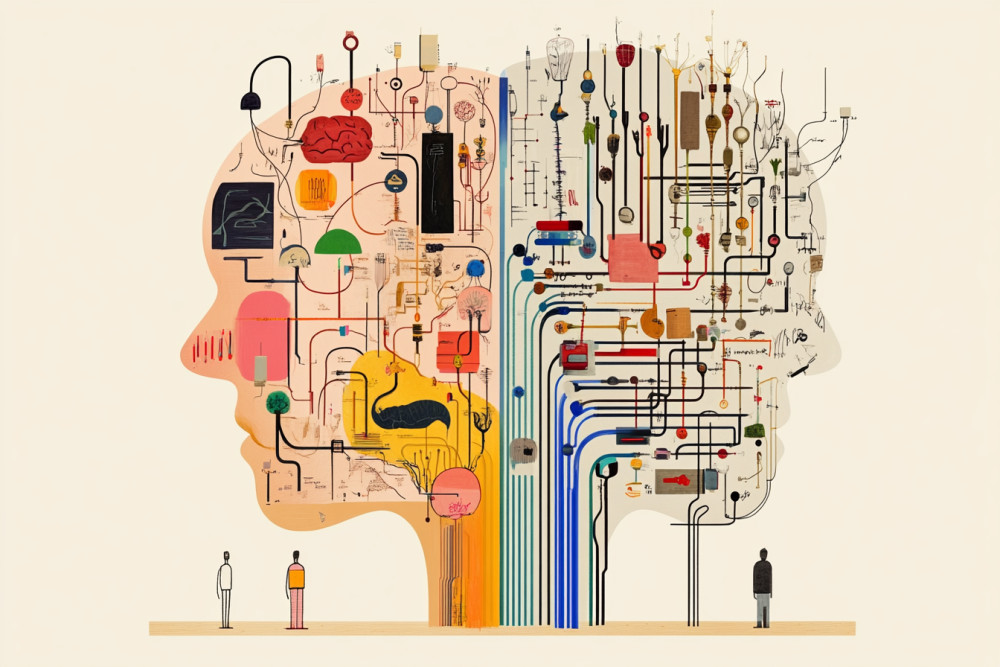Your business has a brain problem.
Not your team's brains. Your business's brain.
The place where all your critical knowledge lives. The plans, the processes, the frameworks that make your business tick.
Right now, it's scattered across Google Drive, Notion, Dropbox, email, and a dozen other digital junk drawers.
And it's getting worse every day.
Here's what we'll cover:
- Why the usual tools fail
- The right way to structure business knowledge
- How we built it without the usual tech headaches
- Why it matters for your business
The Knowledge Hoarding Trap
Most businesses are trying to build a digital brain with tools designed for digital filing cabinets.
Imagine your business as a library where books are randomly shelved, some are missing, and the catalog is outdated. That's the state of most companies' knowledge management today.
Most businesses treat knowledge like squirrels treat nuts.
Gather them frantically. Bury them everywhere. Forget where most of them are buried.
Then wonder why they're hungry in winter.
We've been told better tools will solve this. They won't.
Google Drive gives you folders. Notion gives you databases. WordPress gives you pages.
None of them give you a brain.
The Truth About Knowledge Systems
Here's what the "experts" won't tell you:
The problem isn't about storage. It's about structure.
Your business frameworks need a home built specifically for them. Not a generic warehouse.
Your brand style guide isn't just a document. It's part of your brand strategy, which connects to your marketing plan, which informs your content calendar.
These relationships matter. They're the neural pathways of your business brain.
And they're completely ignored by conventional tools.
[Simple drawing: A scattered pile of papers vs. a well-organized mind map]
Simple Beats Complex
We could show you complex diagrams of our system architecture. We could impress you with code snippets and database schemas.
But that would miss the point.
The magic isn't in the complexity. It's in the simplicity.
We built a system that does one thing extraordinarily well: organize business frameworks in a way that matches how they actually work.
Frameworks contain categories. Categories contain subcategories. Subcategories contain assets.
That's it. Simple, but transformative.
[Simple drawing: Hand-drawn circles and squares connected by lines, representing relationships in the framework]
Different Content Needs Different Homes
Here's a bad idea: storing everything the same way. Generic systems try to treat all your business knowledge like...files. That's lazy.
The right way: different content, different storage.
- Documents = Words. Markdown is your friend: Simple text, easy to version, fast to search.
- Assets = Files. Let the file system do what it does best.
- Links = More than URLs. Add context, titles, descriptions – make them meaningful.
Simple, specialized, sensible.
Version Control That Normal Humans Can Use
Git is amazing. For developers.
For everyone else? It's a weaponized time-waster.
Real businesses need version control that shows:
- What changed
- Who changed it
- Why they changed it
- How to get back to the previous version
No branches. No merges. No commits. No computer science degree required.
Just clarity.
[Simple screenshot: Clean, simple version history interface]
Search That Actually Finds Things
In most systems, search is an afterthought—a keyword hunt that returns a list of files.
Our search understands context. Type "logo," and you don't just get files; you get assets within their framework paths, like "Logo in Core Brand Elements > Brand Identity."
It's search that thinks like you do.
Small Things Matter
The conventional wisdom says more features = better product.
We disagree.
It's the small details that transform a system from "technically functional" to "I actually want to use this":
- Version history that doesn't require a computer science degree
- Search that understands context, not just keywords
- A unified home for documents, files, and links
- Progress tracking that shows what's done and what's not
- Navigation that makes sense to humans, not algorithms
These aren't features. They're solutions to real problems that have been ignored for too long.
Real-World Impact
A marketing agency used to spend hours hunting for the latest brand guidelines across shared drives. Now, their frameworks are organized, searchable, and always up to date.
A growing startup uses the system to onboard new hires—giving them instant access to the company's collective knowledge, structured in a way that makes sense.
The digital brain doesn't just store information; it amplifies it.
The Framework Paradox
Here's the paradox of business frameworks:
The more valuable your frameworks become, the harder they are to manage with conventional tools.
Most businesses respond by creating fewer frameworks. Or letting them rot in digital filing cabinets. Or maintaining them only when absolutely necessary.
This is backwards.
Your frameworks should become more accessible and useful as they grow, not less.
What's at Stake
This isn't about prettier file organization or neater documentation.
It's about:
- Smarter decisions
- Faster onboarding
- Less wasted time
- More aligned teams
- Knowledge that compounds over time
It's about the difference between a business that learns and one that repeats mistakes.
The Future (Without the Hype)
We're not done. The next frontier is integrating AI to surface insights automatically—suggesting connections or flagging outdated assets. But at its core, this system will always be about one thing: making knowledge work for you, not against you.
The Path Forward
We won't pretend this is easy. Building a digital brain requires intention.
It means valuing structure over convenience. It means choosing the right tool, not the familiar one. It means investing in knowledge, not just managing documents.
But the businesses that get this right have an unfair advantage. They learn faster. They adapt quicker. They make better decisions.
While everyone else is searching for that critical document in a sea of folders, they're moving forward.
What You Can Do Today
Start small. Pick one critical business framework. Give it the home it deserves.
Organize it properly. Make it accessible. Keep it current.
Experience what it feels like to have part of your business brain working properly.
Then imagine what's possible when your entire business thinks this way.




